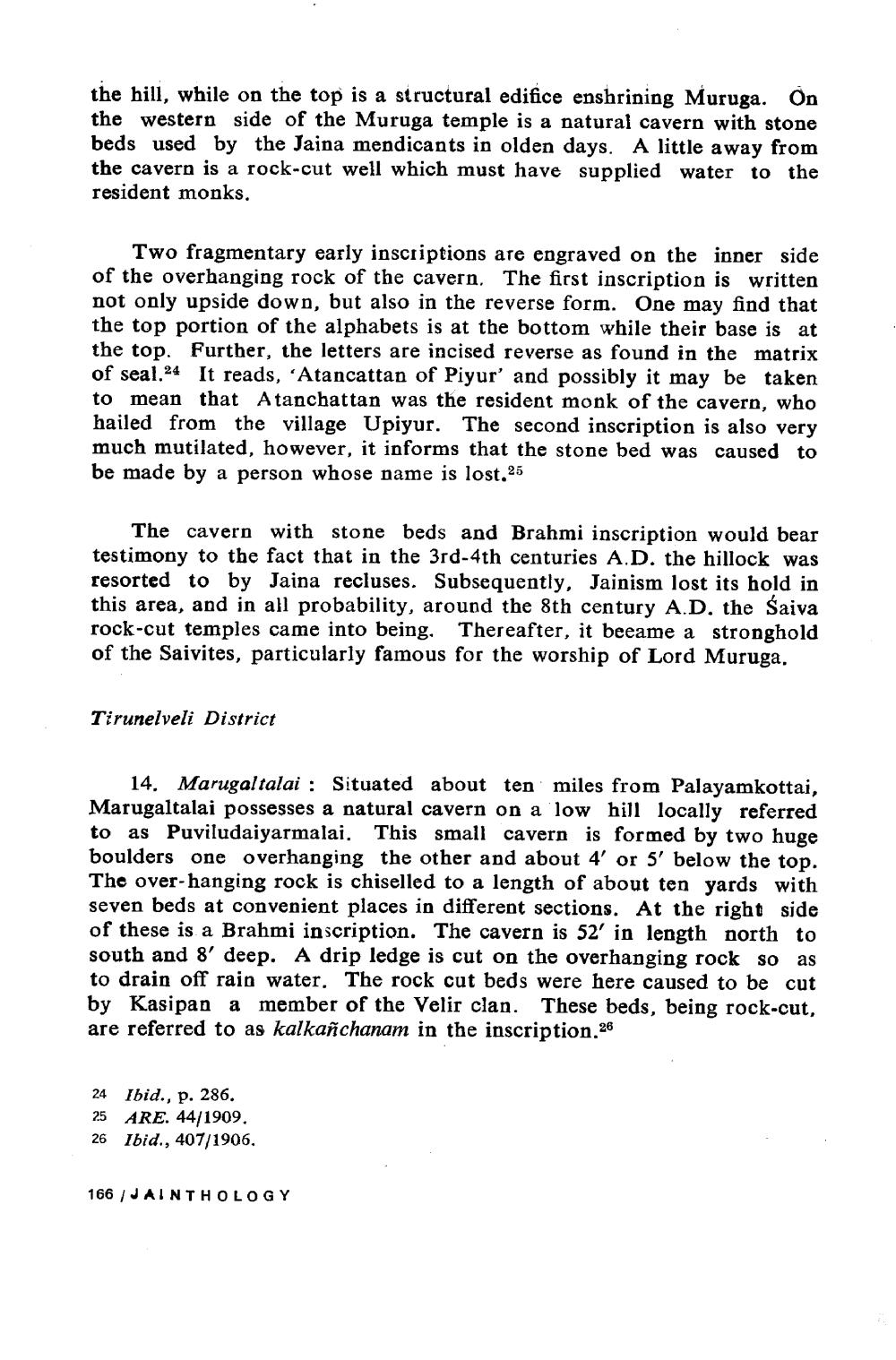________________
the hill, while on the top is a structural edifice enshrining Muruga. On the western side of the Muruga temple is a natural cavern with stone beds used by the Jaina mendicants in olden days. A little away from the cavern is a rock-cut well which must have supplied water to the resident monks.
Two fragmentary early inscriptions are engraved on the inner side of the overhanging rock of the cavern. The first inscription is written not only upside down, but also in the reverse form. One may find that the top portion of the alphabets is at the bottom while their base is at the top. Further, the letters are incised reverse as found in the matrix of seal.24 It reads, 'Atancattan of Piyur' and possibly it may be taken to mean that Atanchattan was the resident monk of the cavern, who hailed from the village Upiyur. The second inscription is also very much mutilated, however, it informs that the stone bed was caused to be made by a person whose name is lost.25
The cavern with stone beds and Brahmi inscription would bear testimony to the fact that in the 3rd 4th centuries A.D. the hillock was resorted to by Jaina recluses. Subsequently, Jainism lost its hold in this area, and in all probability, around the 8th century A.D. the Saiva rock-cut temples came into being. Thereafter, it became a stronghold of the Saivites, particularly famous for the worship of Lord Muruga,
Tirunelveli District
14. Marugaltalai : Situated about ten miles from Palayamkottai, Marugaltalai possesses a natural cavern on a low hill locally referred to as Puyiludaiyarmalai. This small cavern is formed by two huge boulders one overhanging the other and about 4' or 5' below the top. The over-hanging rock is chiselled to a length of about ten yards with seven beds at convenient places in different sections. At the right side of these is a Brahmi inscription. The cavern is 52' in length north to south and 8' deep. A drip ledge is cut on the overhanging rock so as to drain off rain water. The rock cut beds were here caused to be cut by Kasipan a member of the Velir clan. These beds, being rock-cut, are referred to as kalkañchanam in the inscription.26
24 Ibid., p. 286. 25 ARE. 44/1909. 26 Ibid., 407/1906.
166 JAINTHOLOGY




